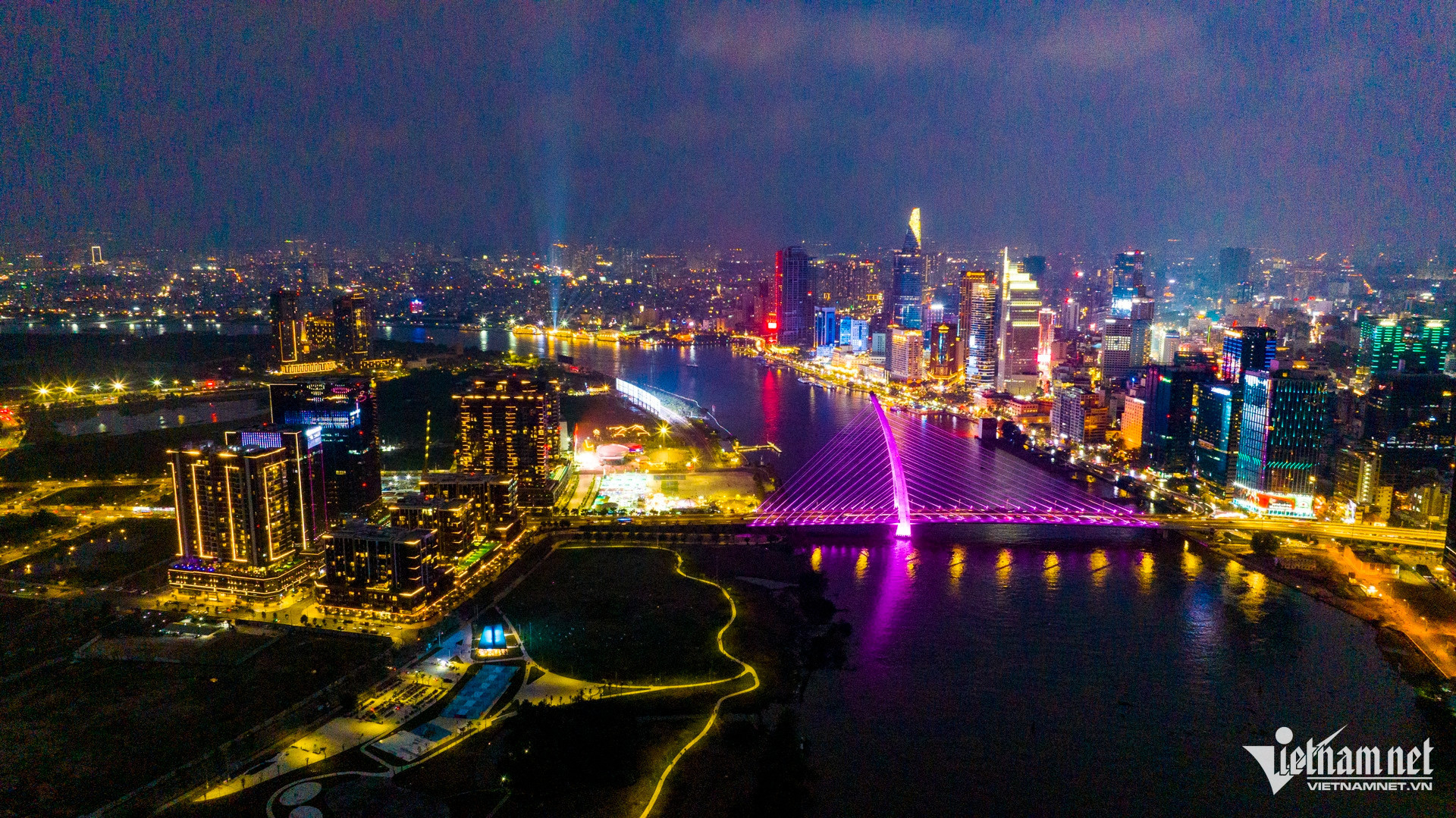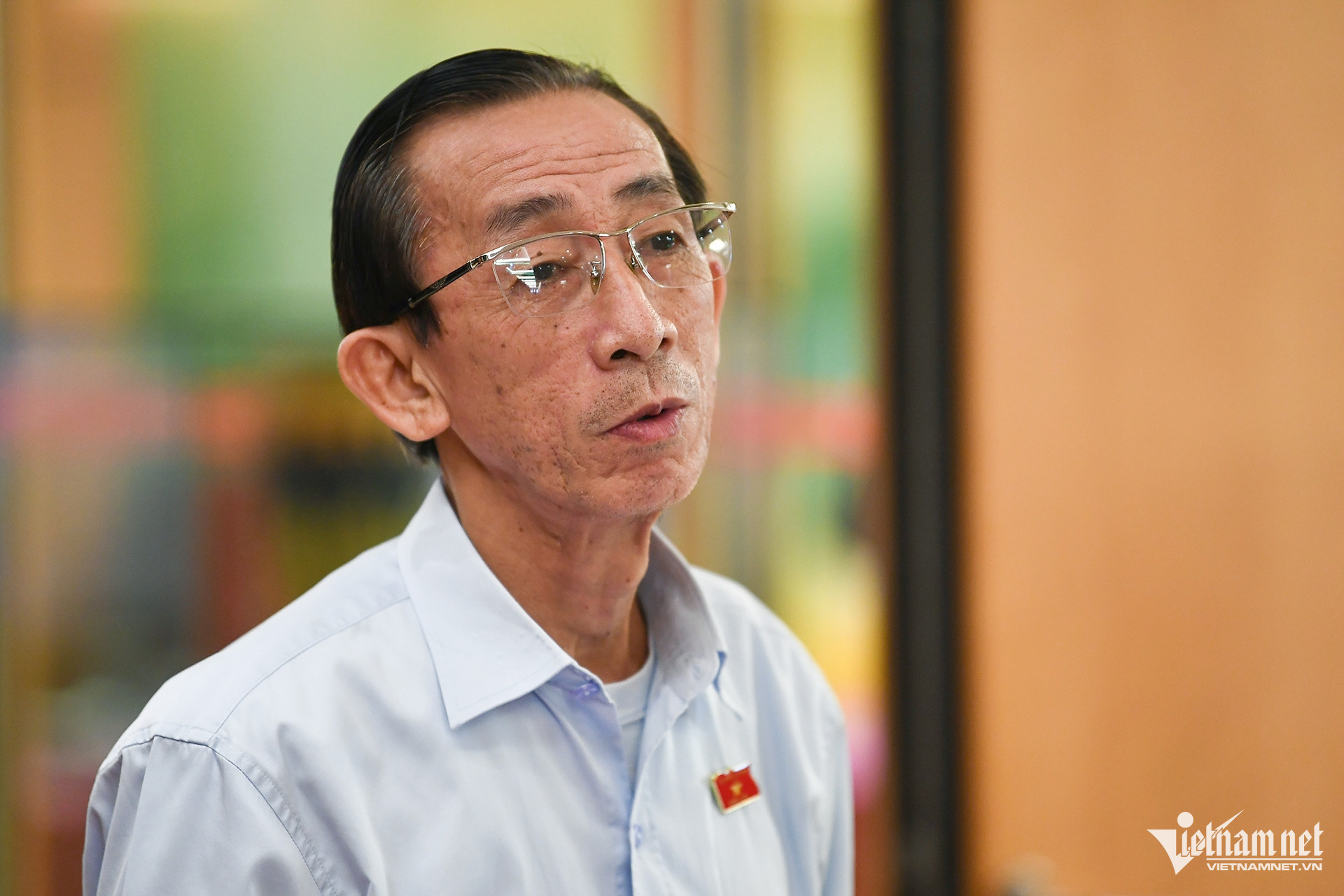
After the merger, the new Ho Chi Minh City is set to become the most powerful megacity in Vietnam. Photo: Nam Khanh
At the 11th Central Committee Conference, the proposal to merge centrally governed cities and provinces was approved. Among the key decisions was the projected unification of Ho Chi Minh City, Binh Duong, and Ba Ria - Vung Tau (BR-VT) into one expanded entity: the new Ho Chi Minh City.
Speaking to VietNamNet, architect Ngo Viet Nam Son said that merging these three localities will unlock vast new opportunities and developmental space - though also accompanied by new challenges.
In the Southeast region, these three provinces, along with Dong Nai, form the most robust “economic sub-quadrant” in the country, contributing the highest portion to the national budget.
Therefore, after the merger, the new Ho Chi Minh City will become one of the most powerful economic growth hubs in Vietnam.
Ngo Viet Nam Son emphasized that retaining the name “Ho Chi Minh City” aligns with global development trends, as the city already carries strong international branding. As such, the administrative center will almost certainly remain in Ho Chi Minh City.
“Ho Chi Minh City was already the strongest growth engine of the nation. Now, with the addition of Binh Duong and BR-VT, it will become a megacity of exponential strength,” he affirmed.
He pointed out that even as the country’s leading city, Ho Chi Minh City currently lacks region-scale infrastructure. For example, the largest airport is in Long Thanh (Dong Nai), the biggest port is Cai Mep - Thi Vai (BR-VT), and the main railway station is Song Than (Binh Duong).
By merging these areas, the city will gain strategic infrastructure assets - an enormous advantage.

Architect Ngo Viet Nam Son. Photo: Contributor
Metro lines connecting Ho Chi Minh City to BR-VT under consideration
However, he also acknowledged the challenges. Key infrastructure systems across the three regions are not yet seamlessly integrated.
Post-merger, authorities must revisit urban planning to align with emerging trends. For instance, BR-VT has about 350 kilometers of coastline. Once merged, the new city will be considered a true coastal metropolis.
Currently, Ho Chi Minh City is seen as a city with a coastline, but not a coastal city in the full sense - since its coastal area in Can Gio District is a protected biosphere reserve with strict development limits.
After the merger, the new Ho Chi Minh City will have greater potential for marine development, including the possibility of extending the metro system down to BR-VT.
Regarding Can Gio superport, architect Nam Son suggested re-evaluating its function. Initially, it was planned as a transshipment port to avoid competing with Cai Mep - Thi Vai. But with the port now becoming part of the same urban system, a revised, more integrated strategy is required.
He noted that as a megacity, the new Ho Chi Minh City will take on greater responsibilities and more complex socioeconomic dynamics, demanding a fresh mindset and governance approach.
“New opportunities and larger developmental space come with greater responsibilities,” Nam Son noted.
Development zones based on regional strengths

According to Dr. Tran Hoang Ngan, National Assembly member from Ho Chi Minh City, the expanded city will have a population of around 13.6 million - 13.4% of the national population - though its area will account for just about 2%, resulting in a population density of roughly 2,040 people per square kilometer.
What’s more, the expanded city contributes a quarter of the national GDP, over a third of state revenue, and one-fifth of Vietnam’s export turnover.
“This shows that Ho Chi Minh City, once the economic locomotive of the country, is now even more vital after the expansion,” Dr. Ngan emphasized.
He suggested that a special governing framework is needed for this megacity. Specifically, the new Ho Chi Minh City should be divided into smaller zones, each focusing on their distinct advantages.
For example, Binh Duong could focus on industrial development through its many concentrated industrial parks.
BR-VT would prioritize the marine economy, including logistics, seaport operations, marine tourism, fishing, aquaculture, and oil and gas industries.
Ho Chi Minh City would remain the national hub for commerce, finance, banking, healthcare, education, and also lead in science and technology, aligned with Politburo Resolution 57, becoming a center for innovation, digital transformation, and possibly an international financial center.
“Such regional zoning will enable the megacity to thrive, eliminating internal competition that existed when they were three separate jurisdictions,” Dr. Ngan explained.
To achieve this, he stressed the need for comprehensive infrastructure connectivity - especially prioritizing metro systems that link the city with each zone.
All systems go for the merger
At the 39th meeting of the Ho Chi Minh City Party Committee, Party Secretary Nguyen Van Nen confirmed to VietNamNet that preparations for the merger are already complete and just await a formal resolution.
He revealed that the Party Secretaries of Ho Chi Minh City, Binh Duong, and BR-VT have met and discussed the merger plan. Government departments, agencies, and local administrations have also proactively taken preparatory steps.
A special merger steering committee has been established, and a full interprovincial meeting is expected in April to further discuss the plan’s implementation.
“We’ve talked through the necessities and internal matters of each locality. Now we just need one comprehensive meeting between all three provinces to finalize the process. Everything is ready - we’re just waiting for the National Assembly’s official resolution to launch implementation urgently and efficiently, in true ‘run while organizing’ fashion,” Secretary Nguyen Van Nen declared.
Ho Van